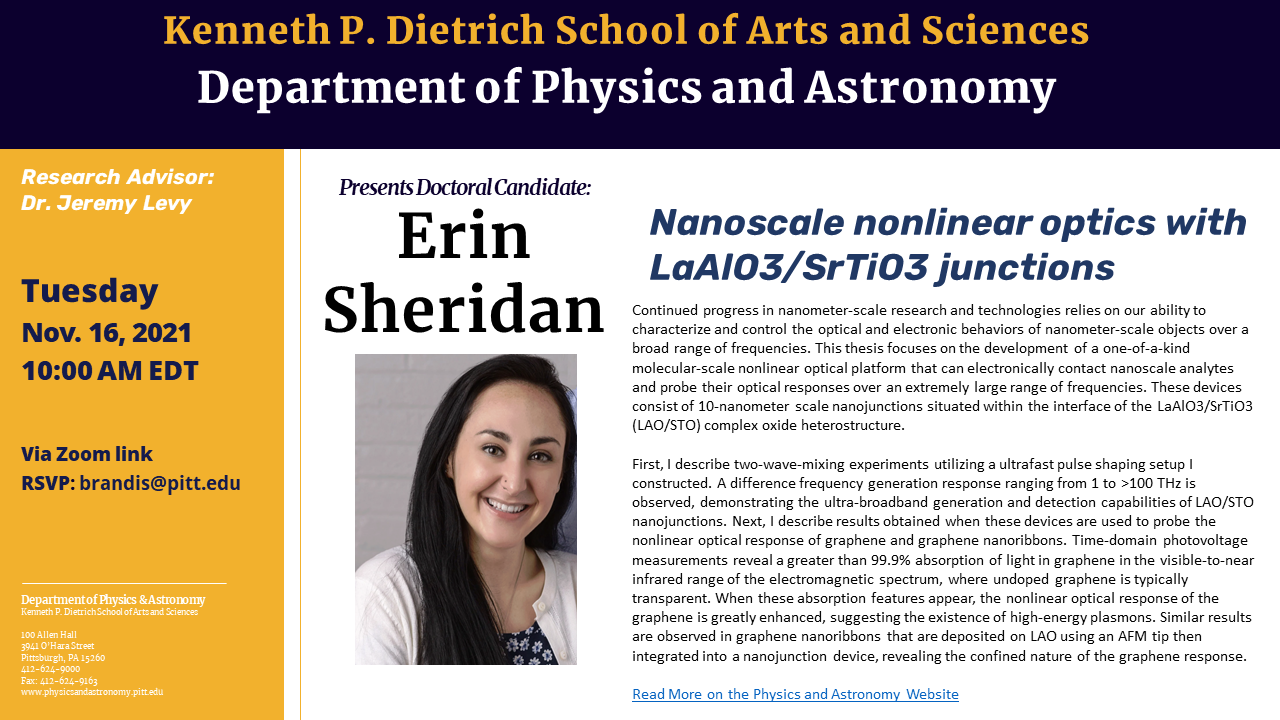Doctoral Defense: Erin Sheridan
November 16, 2021 - 10:00am
Nanoscale nonlinear optics with LaAlO3/SrTiO3 junctions
Continued progress in nanometer-scale research and technologies relies on our ability to characterize and control the optical and electronic behaviors of nanometer-scale objects over a broad range of frequencies. This thesis focuses on the development of a one-of-a-kind molecular-scale nonlinear optical platform that can electronically contact nanoscale analytes and probe their optical responses over an extremely large range of frequencies. These devices consist of 10-nanometer scale nanojunctions situated within the interface of the LaAlO3/SrTiO3 (LAO/STO) complex oxide heterostructure.
First, I describe two-wave-mixing experiments utilizing a home-built ultrafast pulse shaping setup. A difference frequency generation response ranging from 1 to >100 THz is observed, demonstrating the ultra-broadband generation and detection capabilities of LAO/STO nanojunctions. Next, I describe results obtained when these devices are used to probe the nonlinear optical response of graphene and graphene nanoribbons. Time-domain photovoltage measurements reveal a greater than 99.9% absorption of light in graphene in the visible-to-near infrared range of the electromagnetic spectrum, where undoped graphene is typically transparent. When these absorption features appear, the nonlinear optical response of the graphene is greatly enhanced, suggesting the existence of high-energy plasmons. Similar results are observed in graphene nanoribbons that are deposited on LAO using an AFM tip then integrated into a nanojunction device, revealing the confined nature of the graphene response.
Finally, I describe experiments probing the interaction of two graphene/LAO/STO nanojunctions, where one nanojunction acts as a generator and the other as a detector. High harmonic generation (HHG) in graphene is detected up to the 15th harmonic, with frequencies into the extreme ultraviolet (XUV). This is the first known demonstration of on-chip XUV HHG, and enables the integration of nanometer-scale sources into integrated photonic circuits, as well as attosecond-speed spectroscopy of nanoscale objects.
Location and Address
Event is remote-only via Zoom.
Department members, see email for access information.
Non-department members, RSVP through brandis@pitt.edu or contact paugrad@pitt.edu to be added to the weekly newsletter.
